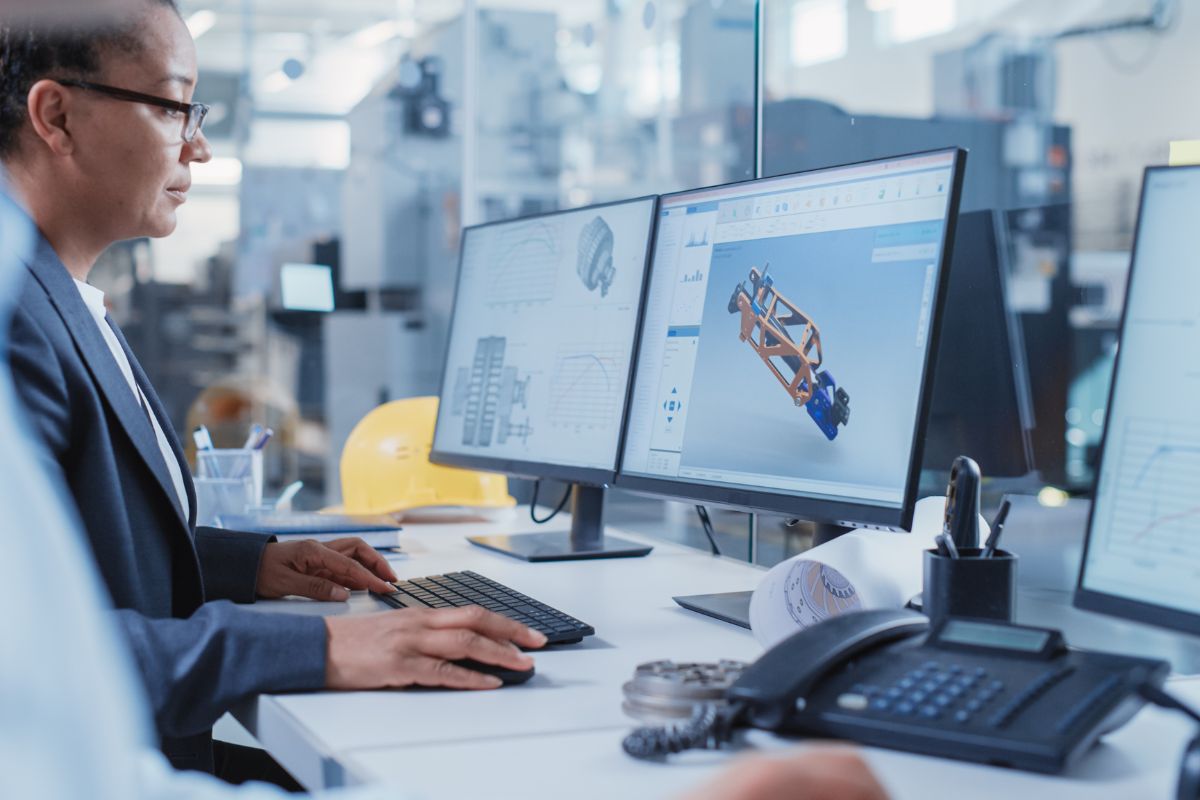The Impact of CAD Drafting on Manufacturing Processes
From the earliest hand-drawn blueprints to today’s sophisticated 3D modeling software, the way we design and manufacture products has undergone a dramatic transformation. At the forefront of this change lies Computer-Aided Design (CAD) drafting, a technology that has fundamentally reshaped the manufacturing landscape. This article explores the profound impact of CAD drafting on various aspects of the manufacturing process, highlighting its contributions to efficiency, quality, and innovation.
From Paper to Pixels: Streamlining Design And Development
Prior to CAD, the design process relied heavily on manual drafting, a time-consuming and error-prone method. Modifications often meant redrawing entire sections and visualizing complex assemblies was a significant challenge. CAD ushered in a new era, allowing designers to create digital models of products. These models can be easily modified, scaled, and rotated, enabling rapid iteration and optimization.
The ability to visualize designs in 3D is a game-changer. Designers can identify potential issues early on, such as assembly clashes or ergonomic problems, before physical prototypes are built. This reduces the need for costly rework and delays down the line. Additionally, CAD software offers a plethora of design tools, from automated drafting functions to stress analysis capabilities, further streamlining the development process.
Boosting Efficiency And Productivity
The benefits of CAD extend far beyond the design stage. By creating highly detailed and accurate digital models, CAD paves the way for a more efficient manufacturing process. These models can be directly integrated with Computer-Aided Manufacturing (CAM) software, which generates instructions for automated machinery. This eliminates the need for manual programming, reducing errors and production time.
Furthermore, CAD facilitates better communication and collaboration between design teams, engineers, and manufacturers. Digital models act as a central source of truth, ensuring everyone is working with the same information. This eliminates confusion and wasted time spent clarifying discrepancies in traditional paper drawings. The ability to share CAD models electronically also streamlines communication with geographically dispersed teams.
Ensuring Quality And Reducing Waste
Manufacturing processes are inherently prone to errors. Traditional methods often relied on physical prototypes and trial-and-error adjustments, leading to material waste and production delays. CAD drafting plays a crucial role in mitigating these issues. By allowing for virtual testing and simulation, designers can identify potential issues early on in the design phase.
This proactive approach allows for adjustments to be made before any physical materials are wasted. The high level of detail and precision offered by CAD models also contributes to improved product quality. Dimensions and tolerances can be precisely defined, ensuring that manufactured components fit together seamlessly. Additionally, features like design for manufacturability (DFM) analysis tools within CAD software help identify potential manufacturing challenges and suggest improvements, leading to a more efficient and streamlined production process.
Driving Innovation And New Possibilities
The impact of CAD drafting extends beyond just improving existing processes. It opens doors to entirely new design possibilities. Complex geometries and organic shapes, once difficult or impossible to produce with traditional methods, can now be readily created and manufactured using CAD. This allows designers to push the boundaries of innovation and create products with enhanced functionality and aesthetics.
Furthermore, CAD drafting services make this expertise accessible to a wider range of businesses, even those without the resources to invest in in-house CAD software and specialists, fostering collaboration and knowledge sharing within the design community. Standardized file formats allow designers to easily share models and collaborate on projects, regardless of the specific software they use. This cross-pollination of ideas fosters a more innovative design environment and accelerates the development of new products.
The Expanding Universe of CAD Drafting
While the core benefits of efficiency, quality, and innovation remain central, the impact of CAD drafting continues to expand. Here’s a glimpse into the future:
Advanced Design Techniques
Generative design utilizes artificial intelligence (AI) to explore a vast design space, suggesting optimal solutions based on pre-defined parameters. Topology optimization, a subset of generative design, focuses on optimizing internal structures for strength and weight reduction. These techniques push the boundaries of innovation and efficiency.
Integration With Other Technologies
Modern CAD software integrates seamlessly with CAM and CAE tools, facilitating a holistic design approach. Designers can not only create models but also simulate their performance within the CAD environment, enabling early identification and real-time optimization. Additionally, digital twin technology, a virtual representation of a physical product, utilizes CAD models as its foundation. This allows for simulating manufacturing processes, predicting maintenance needs, and optimizing product performance throughout its lifecycle.
The Rise of Cloud-Based CAD
Cloud-based CAD platforms offer several advantages, including accessibility from anywhere with an internet connection, scalability to adjust design capabilities based on project requirements, and real-time collaboration through simultaneous access to the same model. This empowers geographically dispersed teams and fosters a more collaborative design environment.
The Future of Manufacturing: A Digital Thread
The evolution of CAD drafting continues at a rapid pace. Advancements in 3D printing and additive manufacturing are blurring the lines between design and production. Cloud-based design platforms enable real-time collaboration and data sharing across geographically dispersed teams. As these technologies continue to develop, we can expect an even more integrated and efficient manufacturing process, often referred to as the “digital thread.” In conclusion, the impact of CAD drafting on manufacturing processes is undeniable. From streamlining design and development to ensuring quality and reducing waste, CAD has revolutionized the way we bring products to life. As technology continues to evolve, CAD will undoubtedly play an even greater role in shaping the future of manufacturing, fostering greater efficiency, innovation, and collaboration.














